Abstract
The anorectal physiology of 106 children with long-standing chronic constipation, who had failed to response to a trial of medical treatment, was assessed. 10 (9%) were shown to have ultrashort-segment Hischsprung's disease, later confirmed on histology, The remainder showed evidence of hypertrophy of the internal sphicter on anorectal manometry and had a vigorous anal dilatation (to accept 4 fingers) under general anesthesia. After this, 38% were able to be weaned off all medication and most of the remainder improved. Further anal dilatation and internal sphincterotomy allowed a further 10 children to stop laxative, bringing the total to 48%.
Full text
PDF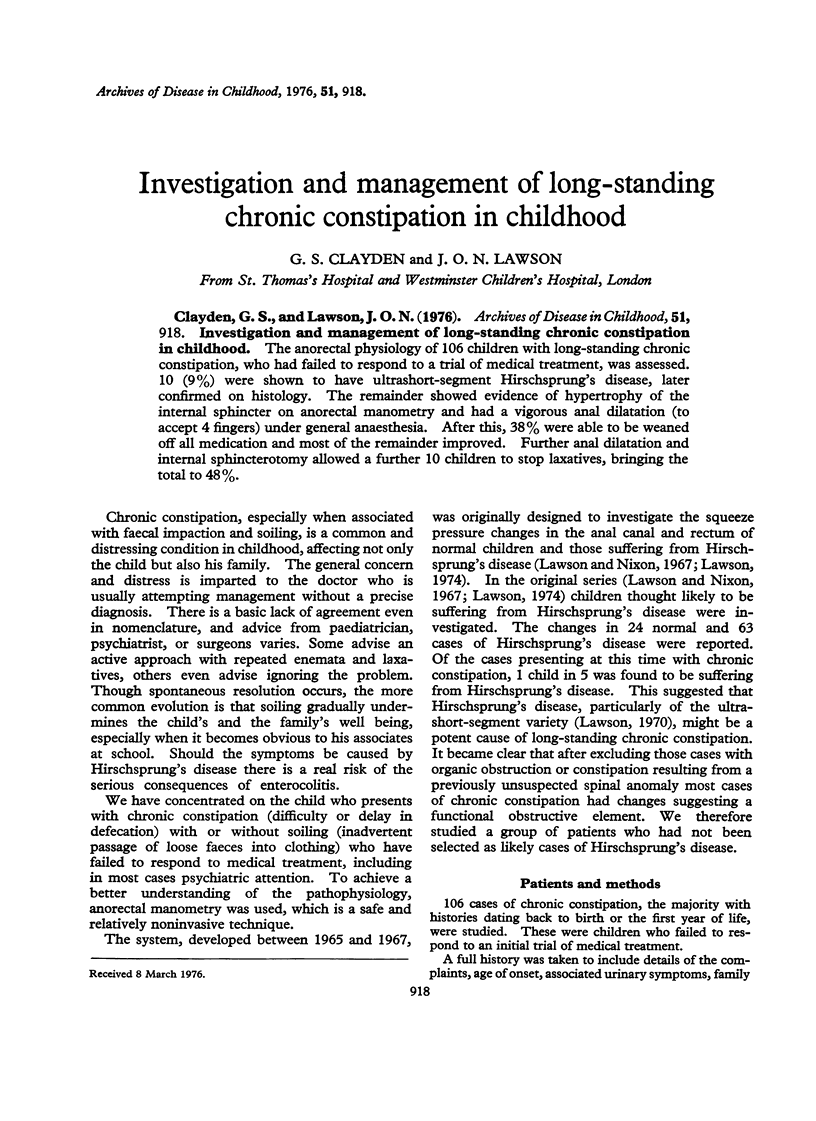
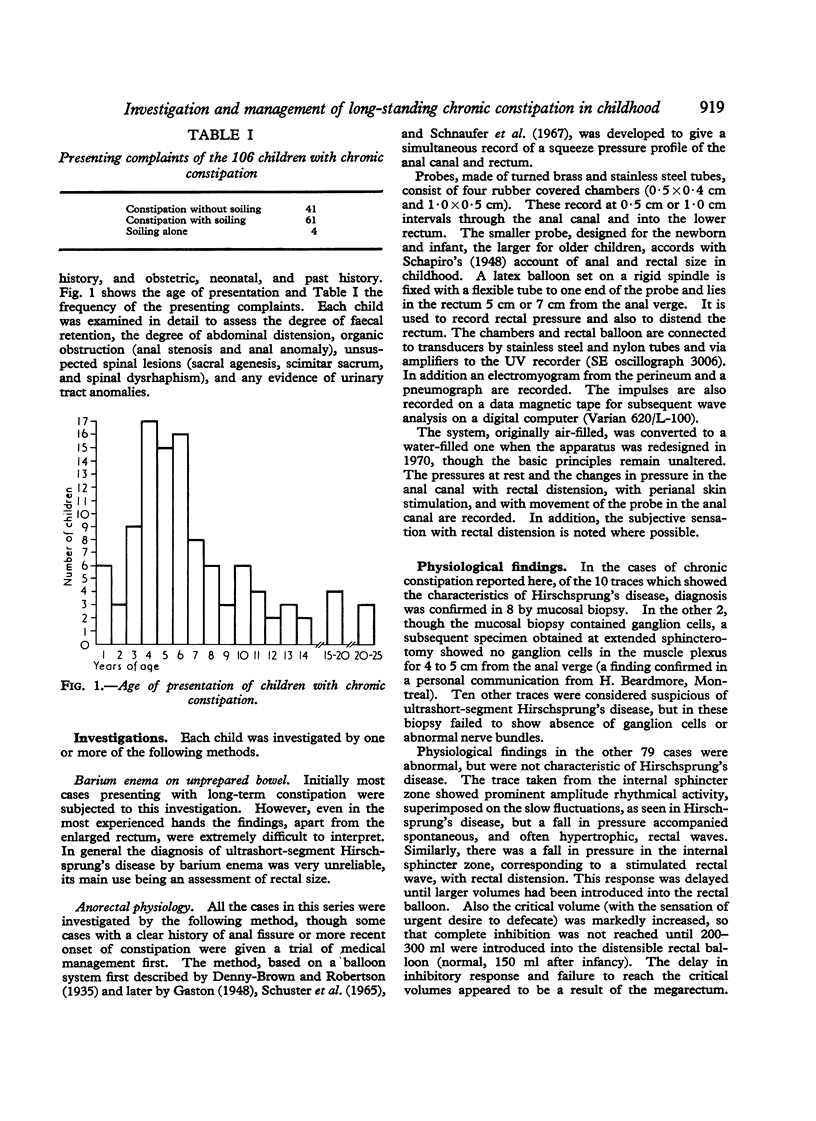
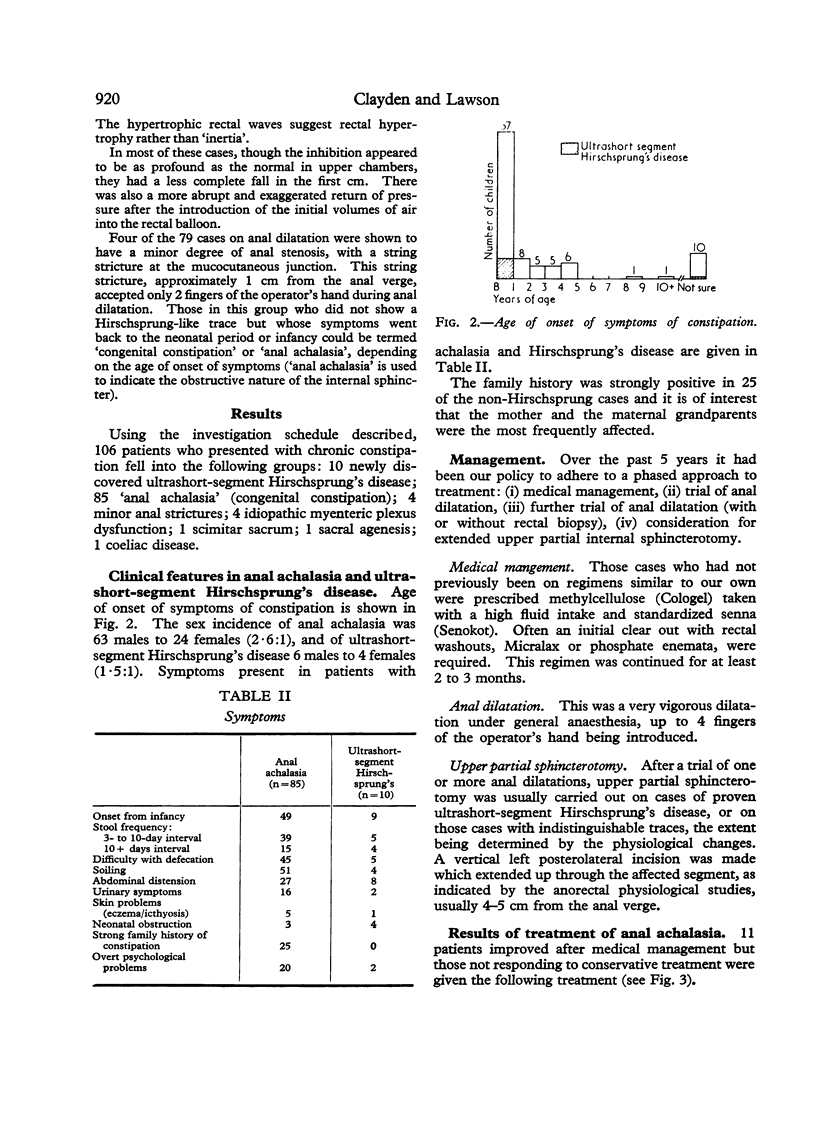
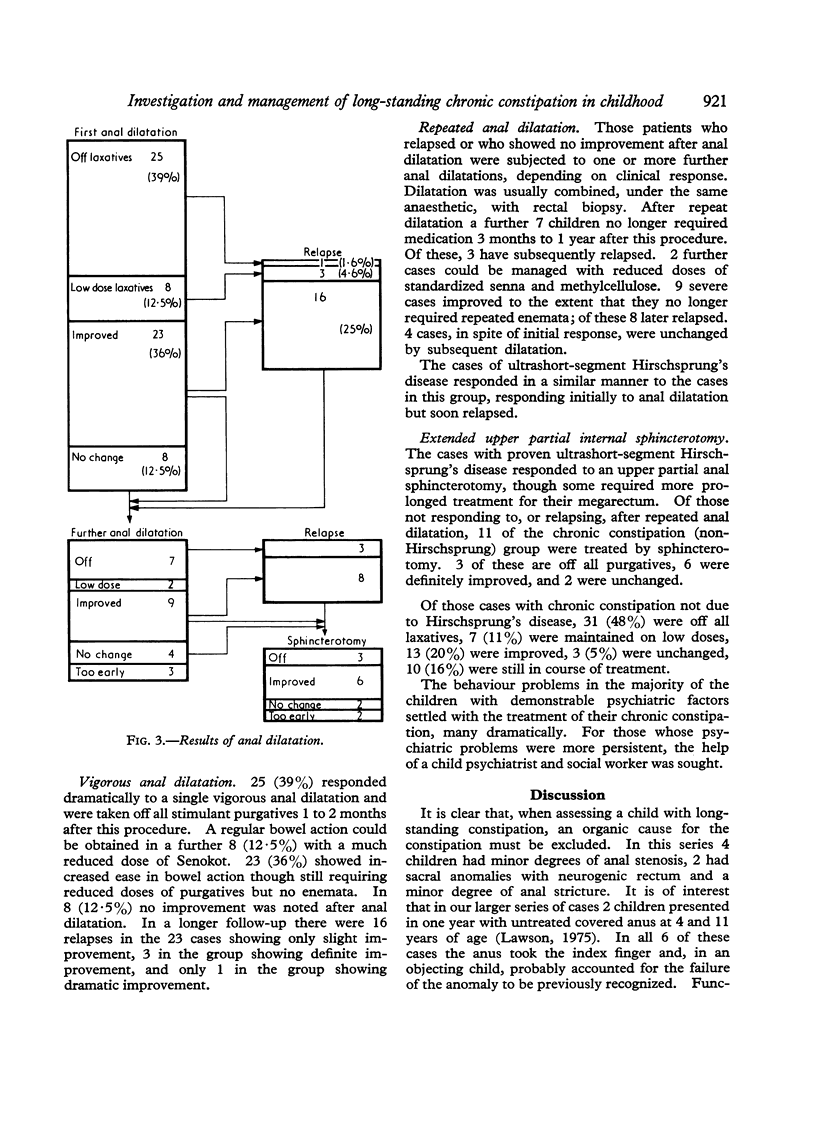
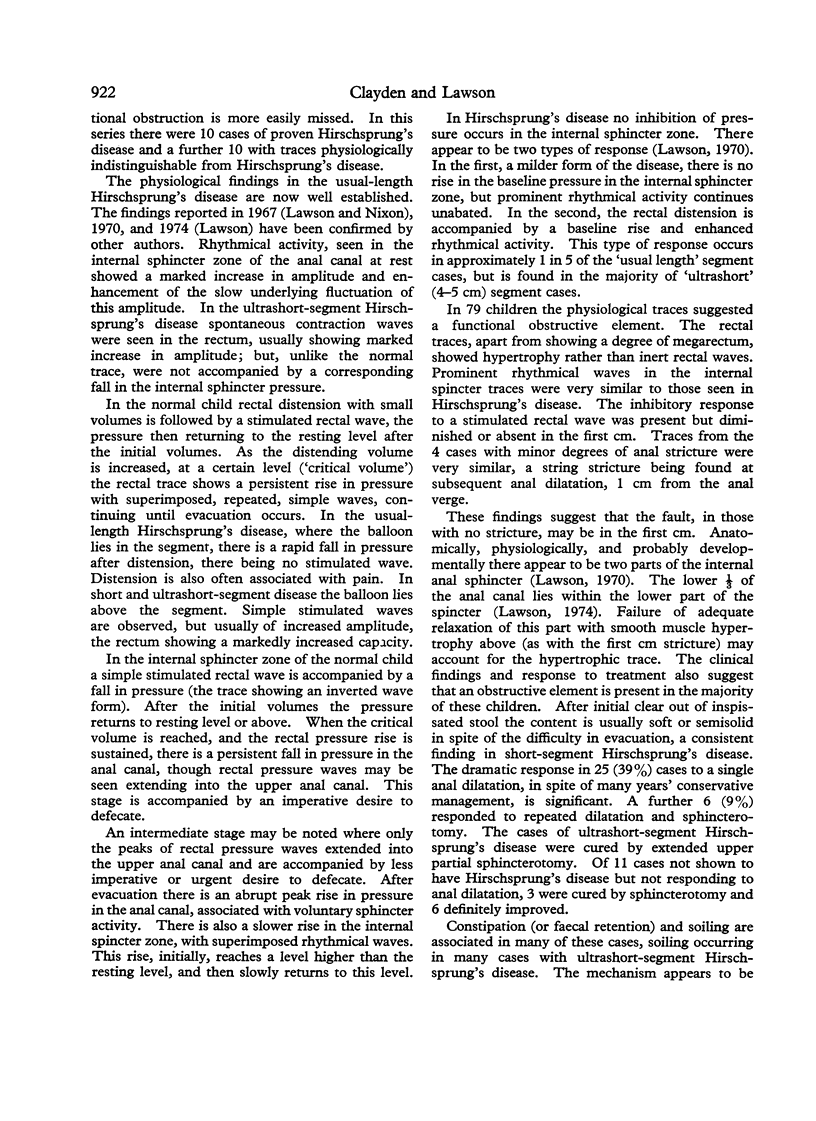
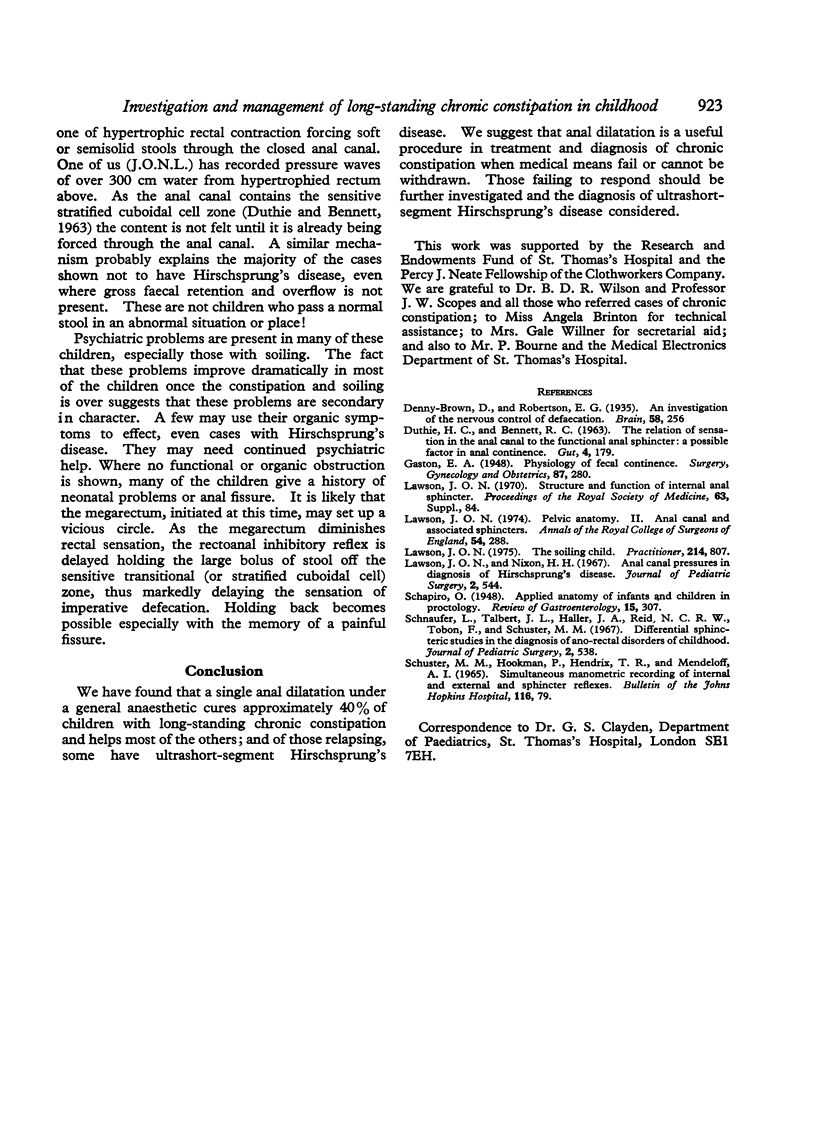
Selected References
These references are in PubMed. This may not be the complete list of references from this article.
- Duthie H. L., Bennett R. C. The relation of sensation in the anal canal to the functional anal sphincter: a possible factor in anal continence. Gut. 1963 Jun;4(2):179–182. doi: 10.1136/gut.4.2.179. [DOI] [PMC free article] [PubMed] [Google Scholar]
- Lawson J. O., Nixon H. H. Anal canal pressures in the diagnosis of Hirschsprung's disease. J Pediatr Surg. 1967 Dec;2(6):544–552. doi: 10.1016/s0022-3468(67)80011-3. [DOI] [PubMed] [Google Scholar]
- Lawson J. O. Pelvic anatomy. II. Anal canal and associated sphincters. Ann R Coll Surg Engl. 1974 Jun;54(6):288–300. [PMC free article] [PubMed] [Google Scholar]
- Lawson J. O. The soiling child. Practitioner. 1975 Jun;214(1284):807–808. [PubMed] [Google Scholar]
- Schnaufer L., Talbert J. L., Haller J. A., Reid N. C., Tobon F., Schuster M. M. Differential sphincteric studies in the diagnosis of ano-rectal disorders of childhood. J Pediatr Surg. 1967 Dec;2(6):538–543. doi: 10.1016/s0022-3468(67)80010-1. [DOI] [PubMed] [Google Scholar]


